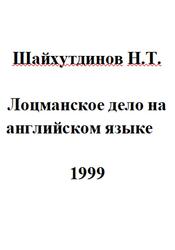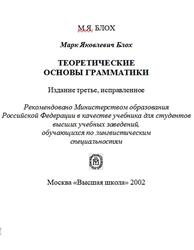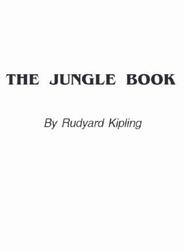Teaching English as a Foreign Language, An Introduction, Surkamp C., Viebrock B., 2018.
The fourteen chapters of this book touch on the fundamental issues and principles of Teaching English as a Foreign Language (TEFL) in both a theoretical and a practical way. You will be able to gather insights into all competence areas important for modern foreign language teaching, its history, its framing by education policy, and most importantly, learn about the very focus point of each lesson, the students. At the same time, you will be able to reflect upon your professional development as a future teacher of English. To facilitate the acquisition of discipline-specific knowledge and professional development, each chapter contains definitions and illustrations for easy orientation, examples for practical applications and classroom use as well as occasions for the reflection of individual experiences.
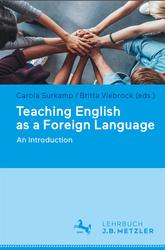
Genesis as an academic discipline.
Early academic roots: In the context of learning and teaching foreign languages, the term didactics occurred early on. Comenius, whose Didac-tica Magna (1657) is still the basis of some of the first known books on learning of foreign languages (so-called methodologies), demanded that the mother tongue and the other modern neighbour languages be adequately taken into account in language teaching (lessons for all). In the 18th century, this demand was only slowly realised and the classical languages were still focused on in language education. Gradually, however, modern national languages gained in significance both in literary production and in school practice. In Germany, enthusiasm for French rose during the course of the 18th century. Its distribution increased accordingly, in schools and in other educational contexts. This development also applied to English over time. In theoretical studies as well as in school education, living languages were considered alongside classical foreign languages. This meant that foreign language skills were also taught to deal with real-life issues. The notion of usefulness (as opposed to merely mental discipline) gained great importance.
In his essay on philology (1840), Carl Mager developed so-called school 'sciences', the outlines of which corresponded to today’s ideas of specialist pedagogy and methodology. He even referred to the term 'di-dactics' (in the German language). Another early use of the term in the context of teaching modern foreign languages, i. e. English and French, can be found in a book title from 1895 (cf. Mtinch/Glauning 1895).
Contents.
Foreword.
1 English Language Teaching and English Language Education—History and Methods (Sabine Doff).
1.1 Background: milestones of ELT history in Germany and Europe since ca. 1800.
1.2 Methods as an anchor of language teaching across the centuries.
1.3 Foreign language education (FLE) and English language education (ELE) as academic disciplines in Germany.
1.4 Conclusion: reasons for studying ELT/ELE history.
2 Institutionalised Foreign Language Learning—Teaching English at Different Levels (Daniela Elsner).
2.1 The German EFL classroom as part of the European education system.
2.2 First encounters with foreign languages—EFL in the primary classroom.
2.3 EFL at secondary level I—preparing learners for private and professional lives.
2.4 Preparing learners for an academic career—EFL at secondary level II.
2.5 Training on and for the job—EFL in vocational schools.
2.6 New paths in foreign languages education.
2.7 Conclusion.
3 Teachers of English as a Foreign Language—Experience and Professional Development (Britta Viebrock).
3.1 Between experiential knowledge and formal academic education: English language teachers’ mind-sets.
3.2 Characteristics of the good English language teacher: reflective practice and professionalism.
3.3 Professional development and models of language teacher education.
3.4 Future challenges of the English language teaching profession.
3.5 Conclusion.
4 Language Learners—From Learning Styles to Identity (Andreas Bonnet).
4.1 EFL in the 21st century between learning and education.
4.2 Language learners from a psycholinguistic point of view: learners as non-trivial machines processing language.
4.3 Language learners from a socio-cultural point of view: learners as human beings and meaning makers.
4.4 Implications for the EFL classroom.
4.5 Conclusion.
5 English Language Learning—An SLA-based Approach (Jörg-U. Keßler).
5.1 Why every foreign language teacher needs to know about second language acquisition.
5.2 The theoretical basis of second language learning.
5.3 Interlanguage and the foreign language classroom.
5.4 Input—output—interaction revisited.
5.5 Conclusion: a role for psycholinguistics in the EFL classroom.
6 Receptive Competences—Reading, Listening, Viewing (Carola Surkamp/Tanyasha Yearwood).
6.1 Reading, listening and viewing as interactive processes.
6.2 Reading, listening and viewing as complex competences.
6.3 Challenges of receptive processes in foreign language contexts.
6.4 Implications for teaching reading, listening and viewing.
6.5 Questions of assessment.
6.6 Conclusion.
7 Productive Competences—Speaking, Writing, Mediating (Petra Kirchhoff).
7.1 Speaking: the nature of spoken discourse and how to teach it.
7.2 Writing: the process of writing and how to teach it.
7.3 Foreign language mediation: new skills for English language teaching.
7.4 Conclusion.
8 Focus on Form—The Lexico-Grammar Approach (Matthias Hutz).
8.1 Lexico-grammar.
8.2 Building lexical knowledge.
8.3 Selecting, presenting and practising lexical items.
8.4 Building grammatical knowledge.
8.5 Implications for the communicative English classroom.
8.6 Conclusion.
9 Teaching Culture—Intercultural Competence, Transcultural Learning, Global Education (Britta Freitag-Hild).
9.1 What is culture? Definitions and concepts.
9.2 Intercultural approaches: concepts, models and dimensions.
9.3 Transcultural perspectives in culture pedagogy.
9.4 Teaching literature and culture.
9.5 Teaching culture in and beyond the classroom: three teaching examples.
9.6 Conclusion.
10 Literature and Film—Approaching Fictional Texts and Media (Christiane Lütge).
10.1 Literature matters: a rationale for teaching literature and film.
10.2 Literature and film—concepts and competences.
10.3 Literary genres and text selection.
10.4 Teaching literature and film—approaches and methods.
10.5 Perspectives for the literature classroom.
10.6 Conclusion.
11 Principles and Methods—Focus on Learners, Content and Tasks (Annika Kolb/Thomas Raith).
11.1 The communicative turn and its implications.
11.2 Focus on learners.
11.3 Focus on content.
11.4 Task-based language learning.
11.5 Conclusion.
12 Media-Assisted Foreign Language Learning—Concepts and Functions (Torben Schmidt/Thomas Strasser).
12.1 Basic definitions.
12.2 From textbooks to multimedia learning environments.
12.3 Current technological and pedagogical trends and developments.
12.4 Conclusion.
13 Settings—Teaching in and beyond the English Language Classroom (Eva Wilden).
13.1 Inside the English language classroom.
13.2 Beyond the English language classroom.
13.3 The classroom as a social meeting place.
13.4 The Internet and English language education.
13.5 Conclusion: the impact of settings on English language learning opportunities.
14 Assessment—What, Why and How? (Karin Vogt).
14.1 Assessment: what is it and what is important about it?.
14.2 The why: purposes of assessment.
14.3 Effective assessment design.
14.4 Beyond testing: alternatives in assessment.
14.5 Conclusion and outlook: current trends in classroom-based language assessment.
15 Authors.
16 Bibliography.
17 Index.
Бесплатно скачать электронную книгу в удобном формате, смотреть и читать:
Скачать книгу Teaching English as a Foreign Language, An Introduction, Surkamp C., Viebrock B., 2018 - fileskachat.com, быстрое и бесплатное скачивание.
Скачать файл № 1 - pdf
Скачать файл № 2 - djvu
Ниже можно купить эту книгу, если она есть в продаже, и похожие книги по лучшей цене со скидкой с доставкой по всей России.Купить книги
Скачать - djvu - Яндекс.Диск.
Скачать - pdf - Яндекс.Диск.
Дата публикации:
Теги: учебник по английскому языку :: английский язык :: Surkamp :: Viebrock
Смотрите также учебники, книги и учебные материалы:
Следующие учебники и книги:
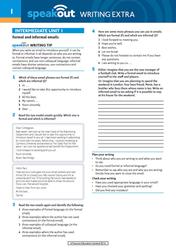 Speakout, Intermediate, Writing extra, With key, 2016 — Фрагмент из книги. When you write an email to introduce yourself, it can be formal or informal. It all depends … Книги по английскому языку
Speakout, Intermediate, Writing extra, With key, 2016 — Фрагмент из книги. When you write an email to introduce yourself, it can be formal or informal. It all depends … Книги по английскому языку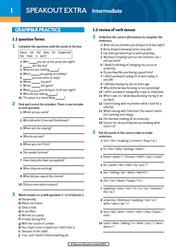 Speakout, Intermediate, Reading & listenin extra, With key, 2015 — Фрагмент из книги. Add one word to each extract. 1 Could I ask question? Why do you think your music … Книги по английскому языку
Speakout, Intermediate, Reading & listenin extra, With key, 2015 — Фрагмент из книги. Add one word to each extract. 1 Could I ask question? Why do you think your music … Книги по английскому языку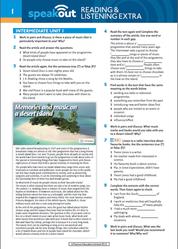 Speakout, Intermediate, Reading & listenin extra, With key, 2016 — Фрагмент из книги. Finally, after years of waiting, fans are in for a real treat when they watch this fi … Книги по английскому языку
Speakout, Intermediate, Reading & listenin extra, With key, 2016 — Фрагмент из книги. Finally, after years of waiting, fans are in for a real treat when they watch this fi … Книги по английскому языку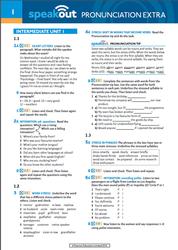 Speakout, Intermediate, Pronunciation extra, With key, 2016 — Фрагмент из книги. On Wednesday I studied all night for my science exam. I knew I would be able to … Книги по английскому языку
Speakout, Intermediate, Pronunciation extra, With key, 2016 — Фрагмент из книги. On Wednesday I studied all night for my science exam. I knew I would be able to … Книги по английскому языку
Предыдущие статьи:
 An Introduction to English Grammar, Nelson G., Greenbaum S., 2016 — An Introduction to English Grammar provides a comprehensive overview of all aspects of English grammar. The first part of the … Книги по английскому языку
An Introduction to English Grammar, Nelson G., Greenbaum S., 2016 — An Introduction to English Grammar provides a comprehensive overview of all aspects of English grammar. The first part of the … Книги по английскому языку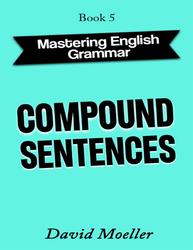 Mastering english grammar, Compound sentences, Book 5, Moeller D., 2021 — Welcome to Book 5: Compound Sentences, a book that teaches four simple ways to join two sentences together. This e-book … Книги по английскому языку
Mastering english grammar, Compound sentences, Book 5, Moeller D., 2021 — Welcome to Book 5: Compound Sentences, a book that teaches four simple ways to join two sentences together. This e-book … Книги по английскому языку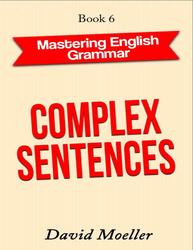 Mastering english grammar, Complex sentences, Book 6, Moeller D., 2021 — Welcome to Book 6: Complex Sentences, a book that teaches how subordinate clauses join with independent clauses to create complex … Книги по английскому языку
Mastering english grammar, Complex sentences, Book 6, Moeller D., 2021 — Welcome to Book 6: Complex Sentences, a book that teaches how subordinate clauses join with independent clauses to create complex … Книги по английскому языку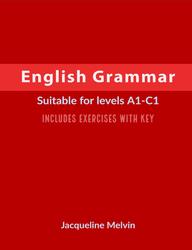 English Grammar, Suitable for levels A1-C1, Melvin J., 2017 — English Grammar theory and practice for ESL students. This book is suitable for beginners (A1) to advanced (C1) with particular … Книги по английскому языку
English Grammar, Suitable for levels A1-C1, Melvin J., 2017 — English Grammar theory and practice for ESL students. This book is suitable for beginners (A1) to advanced (C1) with particular … Книги по английскому языку

